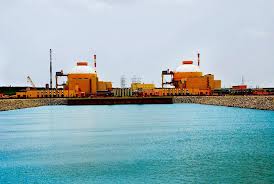The Supreme Court decision to clear the decks for the commissioning of the controversial 1000 MW nuclear powerplant at Kudankulam in Tamil Nadu is certainly a set back for the anti-nuclear agitators; but ironically it will be a bigger setback for the Indian nuclear establishment because it will now be forced to deliver. Will the Department of Atomic Energy (DAE) or the Nuclear Power Corporation India Limited (NPCIL), which have been maintaining that they are ready to commission the plant for nearly a year be able to run it any time soon? That too, when there are widespread allegations that the use of faulty parts in the plant is holding back its commissioning and it should not be allowed to operate until things are completely cleared. [caption id=“attachment_755849” align=“alignleft” width=“380”]  PTI[/caption] The arrest of a senior procurement official of the Russian government company, ZiO-Podolsk, that supplied the parts to Kudankulam Plant, for procuring and supplying inferior quality parts for Russian reactors in different countries have heightened the anxiety of both nuclear-safety and anti-nuclear activists. Although promising and not delivering on time has been an inherent character of the nuclear establishment in the country, according to available information, this time it’s a different and scary story. All might not be well with the plant and it might be a long while before it connects power to the grid. The pre-service inspection of the reactor vessel had begun almost a year ago. As noted in an article in the Indian Express by former AERB Chairman Dr A Gopalakrishnan, “KKNP-1 (Kudankulam Nuclear Power Plant -1) was originally scheduled to start operation in early 2010, but presently even the final start-up testing is not completed. In January 2013, the Secretary, DAE, stated that he was totally certain that the reactor would be started that month itself, but it did not happen.” “From NPCIL’s continuing inability to start-up KKNP-1 till now , it is very obvious that the Indo-Russian commissioning team at Koodankulam is facing some serious problems which they never anticipated.” Gopalakrishnan is an unrelenting former insider and a crusader for transparency and safety of our atomic energy sector. And he does know how (non)transparent the system is and how things can go wrong. The reasons cited by the government is that some of the valves at the nuclear plant have design compatibility issues. Media reports said that the valves were found to be faulty. MR Srinivasan, member of Atomic Energy Commission reportedly said that “the valves were designed partially in India and Russia and compatibility with the reactor led to some hiccups.” Whichever way it is explained, the truth is that there are some problems with the design/parts of the plant. The People’s Movement Against Nuclear Energy (PMANE), the organisation of anti-Kudankulam agitators, alleged that the plant has inferior parts sourced from the Russian company that was in the docks for corruption. The arrest of the company official by the Russian Federal Security Service strengthened their charge. Analysing the possible technical reasons for the delay using “news trickling out of KKNP-1,” Gopalakrishnan says that “the special check valves” of the plant were defective and one or more valves showed cracks in the initial tests. In addition, the “passive heat removal” system is not working according to specifications. Gopalakrishnan says that the root cause of the problem is sub-standard supplies. The fear of the activists is that the plant might have several parts and materials that are of inferior quality because the procurement director of the company that supplied them was cheating. How can one guarantee what is good enough until everything is checked beyond reasonable doubt because the basic quality criteria that the government of India trusted are severely compromised? Adds Gopalakrishnan in his article: “There could be a large number of equipment, components and materials of substandard quality from ZiO-Podolsk already installed in various parts of KKNP- 1 & 2 whose deficiencies and defects are dormant today, but these very same shortcomings may cause such parts to catastrophically fail when the reactor is operated for some time.” Many parts and materials might have been installed within the reactor vessel and they cannot be tested once the plant is critical. In short, commissioning the plant when there is a serious cloud of suspicion, which is corroborated by the arrest of the Russian official, can the DAE and NPCIL endanger the lives of people? Delays in delivering on its tall claims is not new for the India’s nuclear establishment. Although the department of atomic energy has been in existence for more than five decades, of the total 207000 MW electricity that India produces, nuclear energy contributes just 4780 MW - a mere 2.3 per cent. And Kudankulam itself has been in the making for 20 years. However, this is the first time apprehensions have been raised on safety because of possible faulty and inferior parts in a plant. And it is serious. Perhaps this is one of the biggest credibility-challenges faced by the DAE. How will they tide over this crisis? Will they listen to Gopalakrishnan, PMANE and other anti-nuclear activists and stop everything till every single part of the plant is in the clear? Do they have a choice? Do we see power from Kudankulam lighting our homes any time now? Meanwhile, let’s fantasise over three more reactors (of 1000 MW each) at the same Kudankulam site, and the 60,000 MW that the nuclear establishment has promised to deliver across India by 2032.
Although promising and not delivering on time has been an inherent character of the nuclear establishment in the country, according to available information, this time it’s a different and scary story.
Advertisement
End of Article


)

)
)
)
)
)
)
)
)



